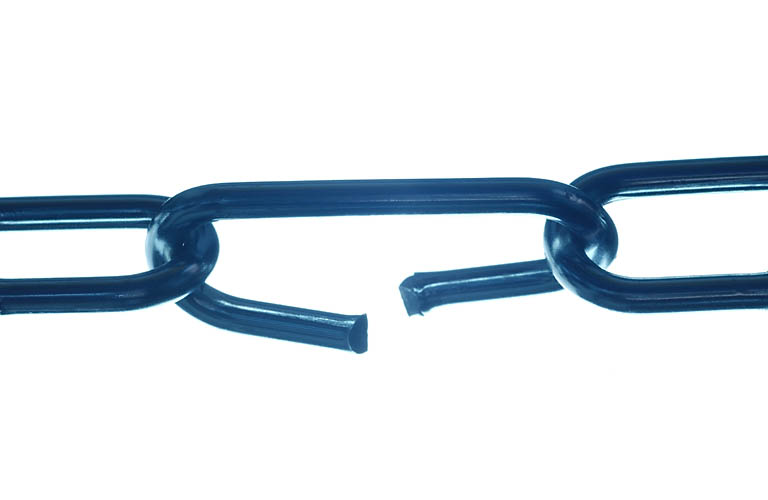Summary
Optimizing parts of a process and then linking them is not the same as optimizing the process. It is by definition sub-optimization. Optimizing sub-functions also tends to result in misaligned objectives.
Process re-engineering: The weakest links

Optimizing the parts means sub-optimization
Many times in the effort to develop the optimal process
flow, the parts of the process are divided up by function
and tackled in chunks. Chunking is a valid way to tackle
complex problems, but optimizing parts of a chain is not
the same as optimizing the chain. Often times, developing
an optimal solution for a sub-process results in a less
than optimal solution for the whole process.
One of the places I always look to improve lead time is
the review and approval cycles that are part of many processes.
Another initiative in which I was involved was to improve
the decision making on which new products to pursue and
better focus resources on the most viable projects. Because
the organization was busy with a number of initiatives,
the project sponsor wanted to keep the scope of the initiative
small and the project team was comprised mostly of Marketing
resources. The first obvious point of contention was that
the business case or proposal for each project went through
numerous iterations and multiple review and approval cycles.
Every approval added lead time to the decision-making process
due to the hectic schedules of the Marketing executives.
The new process included a significantly streamlined new
product proposal process with fewer iterations and fewer
approvals. Reviews and approvals would not take place until
a more robust plan was in place. All those involved in the
old process breathed a sigh of relief and the new process
seemed to significantly improve the flow of work. Well,
it did in Marketing. However, no one from Manufacturing
was included on the team, and the new process meant that
Manufacturing would get better information much later in
the process, something Marketing thought was a good thing.
They wouldn't waste Manufacturing's time with requirements
that weren't quite right. But the manufacturing sourcing
process was quite cumbersome and lengthy due to regulatory
requirements and they needed as much lead time as possible
to get started. Although Marketing streamlined their process,
they added months to the overall process because Manufacturing
wasn't getting the proposal information early enough.
Misaligned objectives
Besides sub-optimization, revising work processes in silos
can result in an even worse outcome - misaligned objectives
where departments work at cross purposes to each other.
I find that this happens quite frequently in the Supply
Chain. For instance, most companies have quarterly sales
targets upon which their sales force's compensation is based.
Sales reps are incredibly motivated to meet their quarterly
targets which is why if they are off towards the end of
the quarter, they may convince their customers to order
more in advance. If you look at sales, they have a tendency
to spike right before a target is due - no shocker there.
However, the entire supply chain would operate more efficiently
if they had smooth demand, rather than ramping up production
to meet a slew of customer orders. Of course, demand drops
after the target date because the customer orders were pushed
ahead to meet the goal. As a result, now production needs
to scale down. The whiplashing demand that is a manufacturer's
nightmare is not caused by fickle customers, but by the
company's very own sales force!
When process reengineering initiatives are conducted by
functional area, they often times end up working to objectives
that are not aligned with the whole company's goals and
the result in mini-versions of the Have cake and eat it,
too cycle. A Marketing initiative to increase market share
may come at the expense of profit margin until someone from
Finance finds out and complains. Initiatives to improve
manufacturing efficiencies often consist of reducing
down time, including machine changeovers, in order to pump
out as much product as possible. However, increasing throughput
volume often comes at the expense of flexibility. Expect
that your Sales department will start complaining if you
don't allow unplanned orders from important customers to
interrupt the schedule.
The biggest problem is that too many initiatives are conducted
in a department silo around a departmental goal. Unless
all the departments agree on which objectives take priority,
like market share over profit margin or customer service
over manufacturing efficiency, the company suffers from
a pendulum effect where whichever measure is swinging wide
gets the attention until another measure starts to swing
wide.






 My
new book,
My
new book,






 If
you have some ideas for articles, please drop me a note
or leave a
If
you have some ideas for articles, please drop me a note
or leave a 
